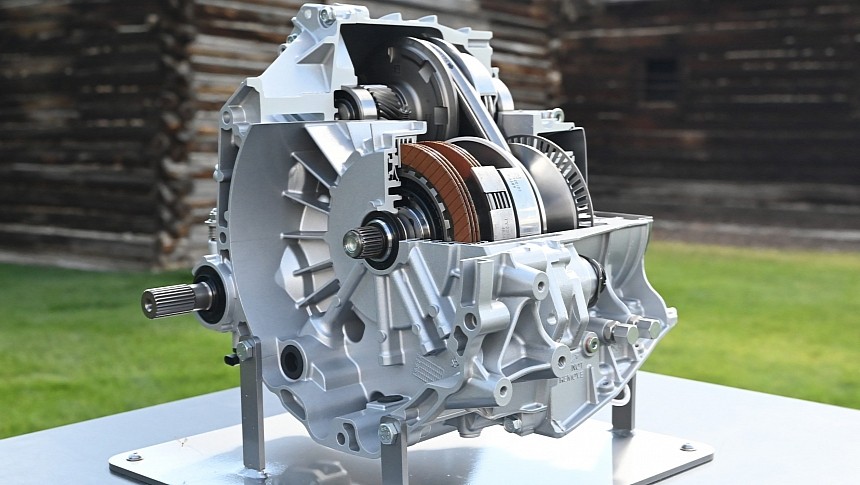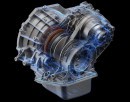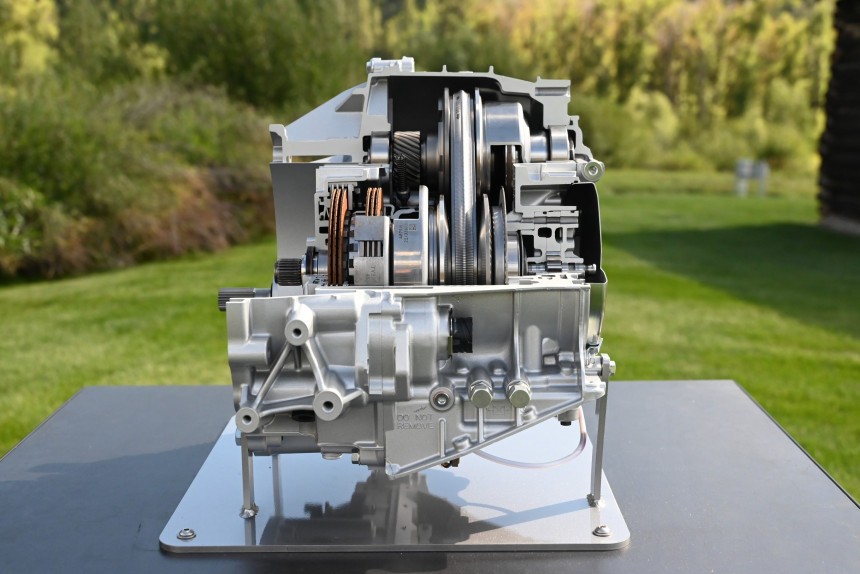One nearly-universal sentiment in the orbit around modern car culture binds together muscle car, European, and JDM fandoms regardless of their backgrounds; we all freaking hate continuously variable transmissions. When someone wise to how modern automobiles function peeps a vehicle spec sheet and finds a CVT on the list, the response is generally a sigh, followed by a clearly annoyed eye roll. But would you believe the opposite is true in powersports and 4x4 utility vehicles? But even by UTV side-by-side standards, Polaris' all-new Steeldrive CVT is nothing short of game-changing.
In celebration of Polaris unveiling the all-new Ranger XD 1500 this summer, the company invited a select group of writers and influencers from across the spectrum of automotive reviewers and the hunting/fishing community most likely to take an interest in Polaris' top-of-the-line UTV. autoevolution.com was honored to be one of the outlets picked for a first look at the new design. We even sat down with Polaris' Utility Product Planning Director, Chris Hurd, for the insider scoop on why SteelDrive is the biggest game-changer in UTV side-by-sides since the genesis of the form factor.
It'd be easy to immediately gravitate towards the XD-1500's all-new, 1.5-liter, three-cylinder engine as a single unit when it was unveiled from its protective covering for photographers to ogle at. But if you ask us, the Steeldrive CVT sitting on the stand next to the new engine is even more fascinating. As we've said, CVTs are no big deal in side-by-sides, ATVs, and snowmobiles. In fact, they're downright routine. But until now, nearly all CVTs in powersports vehicles have been simple rubber belt systems that haven't been fashionable in the automotive space since the 1980s. The first passenger vehicle to run a CVT with belts made from steel rather than rubber was the long-forgotten 1987 Subaru Justy, of all things.
It's taken 36 years for steel-belt CVTs to make the quantum leap from the automotive space to a side-by-side. But now that Polaris has done the grunt work, it's nothing short of a bombshell for the industry. As Chris Holmes pointed out as we sat down for a soda pop and a chat, it takes almost a decade of planning on the part of Polaris' R&D facility in Wyoming, Minnesota, to bring an automotive-style CVT to market. "There's a lot of work that went into the beginning of the project and identifying what was the consumer need. We knew we needed a more capable heavy-duty vehicle. Something able to carry more, able to do more and be more productive." Hurd said of the thought process that brought Polaris SteelDrive to market.
"Once you get there, you start breaking down the vehicle's different systems, be it the engine, suspension, or the transmission, and maximize the productivity. The transmission is an extension of that mindset." With this in mind, the same aspects that make CVTs operate more like hand grenades in heavy passenger cars actually benefit a comparatively lightweight side-by-side that isn't just an expensive toy to the farmers and huntsmen most likely to buy a Ranger XD 1500. That might sound like blasphemy if you've already gone through two warrantied CVTs on your Chrysler or Nissan lately. But as Chris talked us through the finer points of XD-1500 ownership, it all starts to make sense.
"The biggest difference between SteelDrive and automotive CVTs isn't so much operating functions; it's the conditions the two vehicles face when you drive off-road compared to a paved road. There are lots of ups, downs, and lots of rocks and an almost infinite complexity that goes on. If you rode a vehicle with discreet gears, it would be fun in certain situations. For example, when you're racing. But from a perspective of utility, it does detract somewhat. Worrying about being in the right gear isn't optimal out on the trail. You'd need almost an AI level of prediction to figure out the driver's driving characteristics. Not so with just using a CVT instead." Is it starting to all make sense yet?
But it's exactly because the Ranger XD 1500's SteelDrive CVT feels so positively automotive in its refinement that it gets us really buzzing about the new "gearbox." While riding on a dusty dirt trail with trees, mountains, and the occasional herd of cows at the Three Forks Ranch between Colorado and Wyoming, you would only feel the transmission changing ratios if you're a stickler explicitly looking for it. In the same way that an automotive-grade CVT feels smooth up until it breaks, Polaris' SteelDrive makes for a smooth introduction of power as the Ranger XD 1500 climbs the rev range while maximizing fuel efficiency. With dimensions of 477.38 x 423.73 x 421.72 mm and weighing 123 lbs (55.8 kg), it really does look like a scaled-down automotive CVT. But assuming this would be a great disservice to the work Polaris put into this transmission.
It took seven years from start to finish for Polaris to perfect the SteelDrive system to a degree that satisfied Chris and his team. But by optimizing SteelDrive to the very specific needs of a UTV, Polaris might have inadvertently solved the issues that felled so many Altimas, Sentras, and Pathfinders over the last decade just by designing a more conscientious and holistic approach to the average CVT as Chris explained. "The way we approach it is that it has to work in the harshest conditions, which means it has to have top-tier capability when it comes to cooling especially," Chris explained. "There are three radiators in the XD 1500, with one dedicated just to the SteelDrive CVT. It's a great example of doing the right testing for the right consumers with the right inputs and designing something super durable."
Indeed, gearheads forced to put up with CVTs no doubt recall sitting still at a stop light, loading up the throttle with your left foot on the brake and hearing the transmission wail like a wounded animal as you launch hard at the green light. Spoiler alert, that sound is often your transmission slowly grinding itself to pieces due to insufficient cooling. But in an XD 1500, you could load up the throttle, waiting to launch off a sandy back road, in full-4WD mode, and the SteelDrive system won't make so much as a peep. Trust us; we tested it ourselves. But more to the point, the SteelDrive CVT plays a role in the XD 1500's selectable driving modes, feeling more useful than the average economy car.
The differences between comfort mode, standard mode, and sport mode were especially palpable behind the wheel of the XD 1500 NorthStar edition. The comfort setting, in particular, was especially impressive. You could even chat with your passenger inside the cab; it was that quiet. When paired with Polaris' ProStar three-cylinder engine jetting 110 horsepower and 105 lb-ft (42.8 Nm) of torque to play with, the SteelDrive CVT helps distribute every ounce of this power possible to the correct wheel at any given time.
Because SteelDrive breaks conventions in so many ways, it is a piece of tech even automotive enthusiasts can appreciate. But unlike an F-150 or a Ram, which often sacrifice the driving experience for a little extra technology, the XD 1500 offers a nearly uncompromised balance of refinement and capability that Chris and his team worked so hard to achieve. "It's interesting how we've been able to disrupt what you might expect from a heavy-duty UTV to be. We have a machine here that can tow 3,500 lbs (1,587.5 kg) at 30 mph (48.2 kph) all day long while being comfortable to drive. Comfort mode is my favorite; it really makes for a quieter and more comfortable ride."
SteelDrive makes strides in reliability as well, as Chris was eager to point out. With service intervals of around 6,000 miles on the transmission, it's safe to say Ranger XD 1500 operators will spend far more time out at work than they will service their vehicle. Add it all up, and Polaris has a transmission on its hands that engineers in the automotive space really ought to respect.
It'd be easy to immediately gravitate towards the XD-1500's all-new, 1.5-liter, three-cylinder engine as a single unit when it was unveiled from its protective covering for photographers to ogle at. But if you ask us, the Steeldrive CVT sitting on the stand next to the new engine is even more fascinating. As we've said, CVTs are no big deal in side-by-sides, ATVs, and snowmobiles. In fact, they're downright routine. But until now, nearly all CVTs in powersports vehicles have been simple rubber belt systems that haven't been fashionable in the automotive space since the 1980s. The first passenger vehicle to run a CVT with belts made from steel rather than rubber was the long-forgotten 1987 Subaru Justy, of all things.
It's taken 36 years for steel-belt CVTs to make the quantum leap from the automotive space to a side-by-side. But now that Polaris has done the grunt work, it's nothing short of a bombshell for the industry. As Chris Holmes pointed out as we sat down for a soda pop and a chat, it takes almost a decade of planning on the part of Polaris' R&D facility in Wyoming, Minnesota, to bring an automotive-style CVT to market. "There's a lot of work that went into the beginning of the project and identifying what was the consumer need. We knew we needed a more capable heavy-duty vehicle. Something able to carry more, able to do more and be more productive." Hurd said of the thought process that brought Polaris SteelDrive to market.
"Once you get there, you start breaking down the vehicle's different systems, be it the engine, suspension, or the transmission, and maximize the productivity. The transmission is an extension of that mindset." With this in mind, the same aspects that make CVTs operate more like hand grenades in heavy passenger cars actually benefit a comparatively lightweight side-by-side that isn't just an expensive toy to the farmers and huntsmen most likely to buy a Ranger XD 1500. That might sound like blasphemy if you've already gone through two warrantied CVTs on your Chrysler or Nissan lately. But as Chris talked us through the finer points of XD-1500 ownership, it all starts to make sense.
But it's exactly because the Ranger XD 1500's SteelDrive CVT feels so positively automotive in its refinement that it gets us really buzzing about the new "gearbox." While riding on a dusty dirt trail with trees, mountains, and the occasional herd of cows at the Three Forks Ranch between Colorado and Wyoming, you would only feel the transmission changing ratios if you're a stickler explicitly looking for it. In the same way that an automotive-grade CVT feels smooth up until it breaks, Polaris' SteelDrive makes for a smooth introduction of power as the Ranger XD 1500 climbs the rev range while maximizing fuel efficiency. With dimensions of 477.38 x 423.73 x 421.72 mm and weighing 123 lbs (55.8 kg), it really does look like a scaled-down automotive CVT. But assuming this would be a great disservice to the work Polaris put into this transmission.
It took seven years from start to finish for Polaris to perfect the SteelDrive system to a degree that satisfied Chris and his team. But by optimizing SteelDrive to the very specific needs of a UTV, Polaris might have inadvertently solved the issues that felled so many Altimas, Sentras, and Pathfinders over the last decade just by designing a more conscientious and holistic approach to the average CVT as Chris explained. "The way we approach it is that it has to work in the harshest conditions, which means it has to have top-tier capability when it comes to cooling especially," Chris explained. "There are three radiators in the XD 1500, with one dedicated just to the SteelDrive CVT. It's a great example of doing the right testing for the right consumers with the right inputs and designing something super durable."
Indeed, gearheads forced to put up with CVTs no doubt recall sitting still at a stop light, loading up the throttle with your left foot on the brake and hearing the transmission wail like a wounded animal as you launch hard at the green light. Spoiler alert, that sound is often your transmission slowly grinding itself to pieces due to insufficient cooling. But in an XD 1500, you could load up the throttle, waiting to launch off a sandy back road, in full-4WD mode, and the SteelDrive system won't make so much as a peep. Trust us; we tested it ourselves. But more to the point, the SteelDrive CVT plays a role in the XD 1500's selectable driving modes, feeling more useful than the average economy car.
Because SteelDrive breaks conventions in so many ways, it is a piece of tech even automotive enthusiasts can appreciate. But unlike an F-150 or a Ram, which often sacrifice the driving experience for a little extra technology, the XD 1500 offers a nearly uncompromised balance of refinement and capability that Chris and his team worked so hard to achieve. "It's interesting how we've been able to disrupt what you might expect from a heavy-duty UTV to be. We have a machine here that can tow 3,500 lbs (1,587.5 kg) at 30 mph (48.2 kph) all day long while being comfortable to drive. Comfort mode is my favorite; it really makes for a quieter and more comfortable ride."
SteelDrive makes strides in reliability as well, as Chris was eager to point out. With service intervals of around 6,000 miles on the transmission, it's safe to say Ranger XD 1500 operators will spend far more time out at work than they will service their vehicle. Add it all up, and Polaris has a transmission on its hands that engineers in the automotive space really ought to respect.








